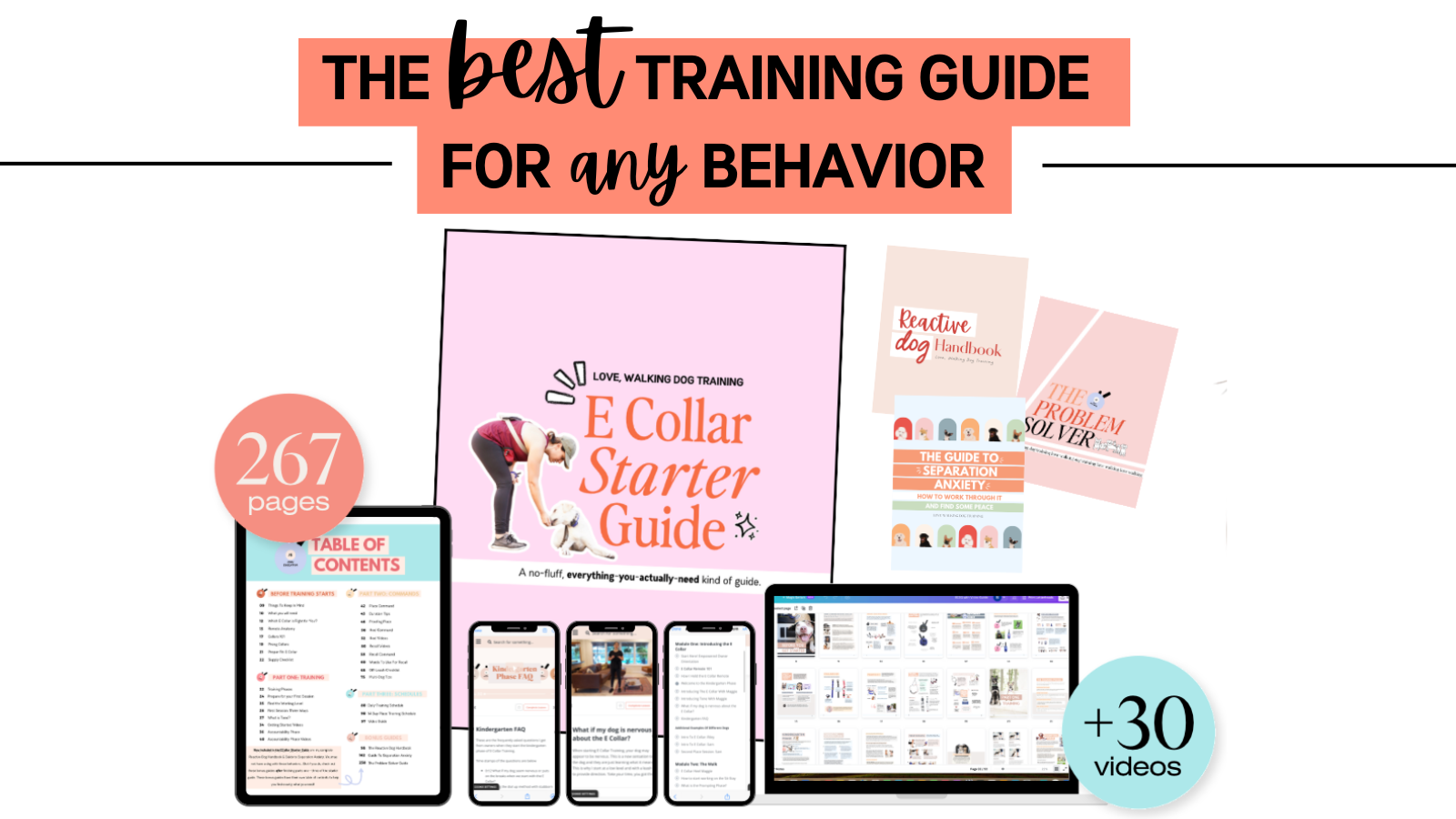Surprising Things That May Make Your Dog More Reactive
Having a reactive dog can be challenging and overwhelming. Sometimes it feels like there is no rhyme or reason for your dog’s reactivity… but I’m here to challenge that thinking and offer some guidance for struggling owners. Here at Walking Dog Training, I like to remind owners that often what we are doing / or not doing / has an impact on our dogs behavior whether we realize it or not.
That’s why I call it owner training.
So let’s talk about some things that may be fueling those reactive behaviors driving you crazy. Through my years as a dog trainer - working with many reactive dogs and having a few of my own - I have learned that reactivity is a byproduct of too much freedom and overstimulation. Here are five things you may be allowing at home with your dog that may actually be making their reactivity worse.
Letting your dog rush through doorways.
You know when you open the car door and your dog runs out when you arrive at a new destination? Or when you get home and as soon as you open the kennel door it’s like letting a wild bull into the ring? So much excitement! This may actually be fueling reactivity at this moment or down the road. Giving your dog the freedom to rush is creating overstimulation that makes it difficult for them to control their behavior. Helping your dog slow down at any threshold (fancy word for doorways) will help their mind slow down. I know - wild, right? Sometimes it’s the small moments throughout your day that truly make all the difference.
Try putting a leash on your dog when doing this and use the kennel door as a barrier - closing it when your dog tries to rush out. Bonus points if you stay quiet - no words are needed (see below on why I recommend this).
Letting your dog look out the windows at home when you’re away.
An excited mindset is the ultimate breeding ground for reactivity. If your dog is totally calm when you’re away, ignore this one. If not, what if your dog is getting worked up any time they see a dog or cat walk by? If your dog is consistently stimulated by distractions while you’re away, it can amp up their reactivity. Giving your dog the freedom to run around the house and look out the windows may actually be making their reactivity worse. Give your dog some boundaries, like a crate, to help provide clarity on what you expect them to do while you are away.
Talking way too much to your dog, especially when reacting.
I know I’ve said this one before, but it’s worth mentioning again and again… forever. Because who gets a dog and thinks you shouldn’t talk to them? Nobody. Like Ever. But here we are.
Think of your sweet owner talk as fuel for the reactive fire. It’s second nature for us, as humans, to talk to our pets. That’s what us humans do - talk. But to dogs words are not as clear as other forms of communication and may actually add to their reactivity. When a dog is reacting and we talk to them we are increasing their overstimulated mindset. Next time your dog gets worked up (barking or whiney or any of the other stuff) try silence and boost your dog’s confidence by giving them a job like place, heel, or kennel time (along with e collar guidance). Odds are, your dog is reactive because they aren’t sure what they should be doing instead. Provide that clarity with a job - not words. This is a form of communication your dog can understand.
Letting your dog “bark it out”.
When asking for help with their dog’s reactivity, I’ve heard owners say they were told to “let their dog bark it out” and that “correcting the barking would only make things worse”.
It’s so wild out there.
Here’s the problem with this - the more your dog barks, the more reactive they get. The less they are allowed to bark, the calmer they get. Makes sense right?
I like to describe this like a hamster wheel - your dog’s reactive mindset is like a hamster on a wheel. Going going going. You need something to stop the wheel. Learning how to effectively say no to barking is essential to helping your dog learn how to chill. Give them a job to do instead of barking (place is my favorite - can you tell?) to offer a calmer alternative to their reactivity.
Remember that those small everyday choices make such a big difference to our dogs. Are these things alone going to solve your dog’s reactivity? No. But making these small changes can help reduce an opportunity for reactivity.
When in doubt, give your dog a job and provide clear boundaries using the e-collar.
Still needing more guidance with your reactive dog? I’ve got lots of great resources for you. My Reactivity Freebie is a great place to start. It’s PACKED with training guidance to help you work through reactive behavior. If you haven’t started e-collar training yet, I recommend getting my E-Collar Starter Guide & Video Library that also has the Reactive Dog Handbook now included! As always, reach out if you need help breaking the reactivity cycle!
Love, Walking Dog Training





